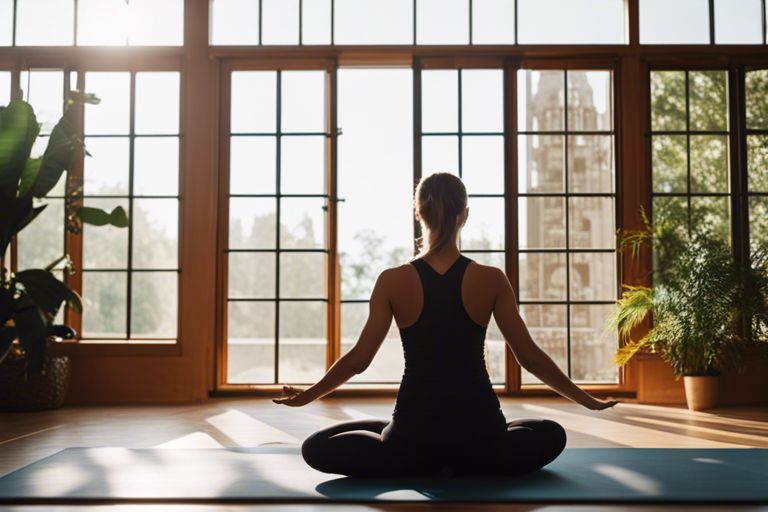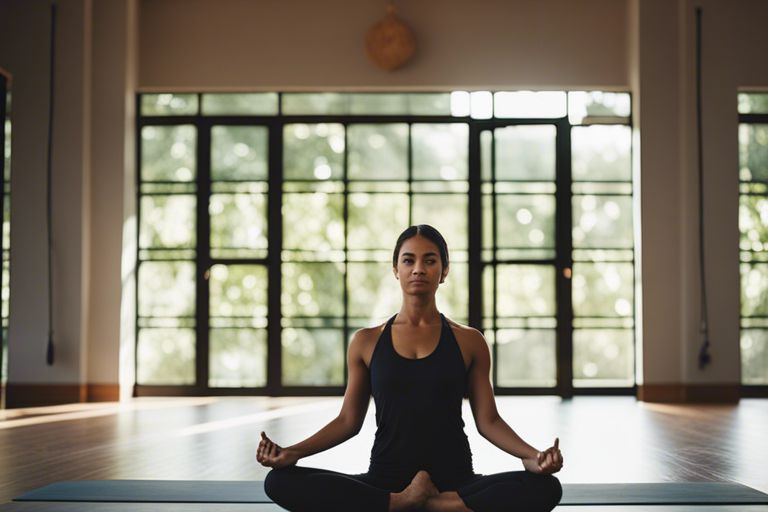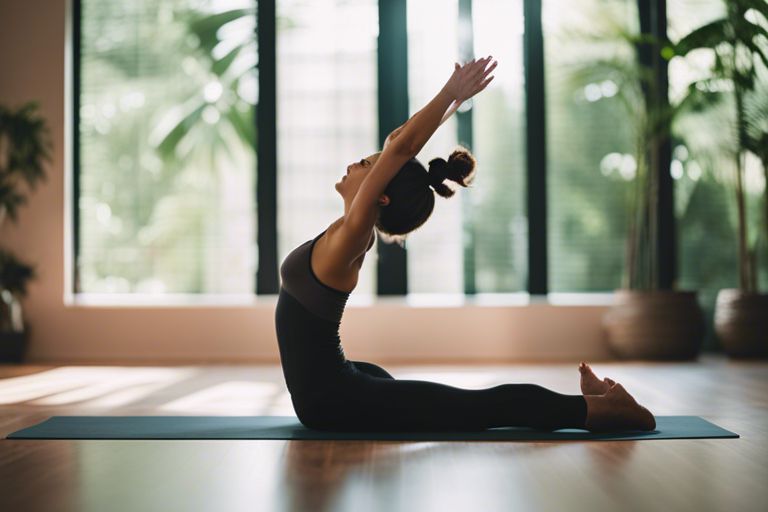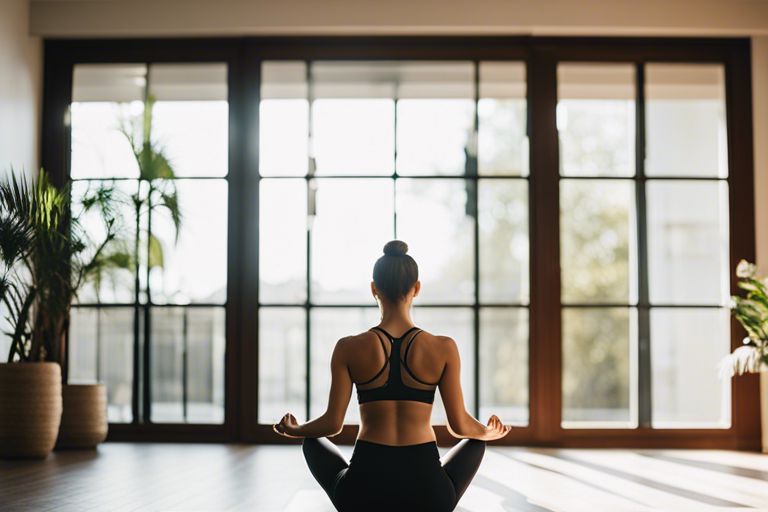Many find the gentle and calming nature of slow flow yoga to be highly effective in relieving stress and anxiety. In this blog post, you will learn how to incorporate slow flow yoga into your daily routine to help reduce stress levels and promote a sense of inner peace. Take a deep breath, roll out your mat, and let’s get started on your journey to a calmer mind and body.
Key Takeaways:
- Intentional Breathing: Focusing on deep, intentional breathing can help calm the body and mind, reducing stress and anxiety.
- Mindful Movement: Practicing slow, deliberate movements in slow flow yoga can help increase body awareness and promote relaxation.
- Embracing Stillness: Incorporating periods of stillness and meditation into your practice can further aid in stress relief and mindfulness.

Understanding the Basics of Slow Flow Yoga
What is Slow Flow Yoga?
On your journey to stress relief, Slow Flow Yoga can be a game-changer. This style combines the fundamental principles of traditional yoga with a slower pace and deliberate movements. During a Slow Flow session, you will smoothly transition from one pose to another, syncing your breath with each movement. This gentle flow allows you to focus on proper alignment, breathing techniques, and mindfulness, promoting a sense of calm and relaxation in your practice.
Benefits of Slow Flow Yoga for Stress Relief
On your mat, Slow Flow Yoga offers numerous benefits for your mind and body. Practicing this style can help you release tension, improve flexibility, and build strength gradually. The deliberate pacing of Slow Flow allows you to cultivate self-awareness and presence, relieving stress and anxiety. By connecting breath with movement, you can enhance your ability to stay present and centered, even in the face of daily challenges.
Basics
Slow Flow Yoga is a gentle yet powerful practice that can significantly impact your overall well-being. The deliberate movements and focus on breath create a meditative experience that encourages relaxation and stress relief. This style is suitable for all levels, making it accessible for beginners while offering opportunities for growth and exploration to seasoned practitioners.
1. Find a quiet space to practice slow flow yoga.
2. Begin with deep breathing to activate relaxation response.
3. Flow through gentle, intentional poses at a slow pace.
4. Focus on linking breath with movement to stay present.
5. Allow yourself to release tension and let go of stress.
6. End practice with a few minutes of relaxation and meditation.

Preparing for Your Slow Flow Yoga Practice
It is imperative to set the right ambiance for your slow flow yoga practice to fully immerse yourself in the calming experience.
Tips for Creating a Peaceful Practice Space
- Choose a quiet and clutter-free area in your home.
- Use soothing imperative oils or incense to create a calming atmosphere.
- Dim the lights or use candles to create a soft, relaxing glow.
Perceiving a tranquil environment can help you relax your mind and body, allowing you to fully concentrate on your slow flow practice.
Factors to Consider When Choosing a Yoga Mat
- Thickness and cushioning of the mat.
- Material and texture for non-slip grip.
Some factors to consider when choosing a yoga mat include the thickness and cushioning for joint support, the material for durability and grip, and the texture for a non-slip surface. The right yoga mat can enhance your practice by providing the necessary support and stability.
Another Factors to Consider When Choosing a Yoga Mat
- Portability and weight for easy transport.
- Environmental friendliness and sustainability.
Another imperative factor to consider when choosing a yoga mat is its portability and weight for easy transport to and from your practice space. The environmental friendliness and sustainability of the mat are also crucial aspects to align with your values and contribute positively to the planet.
How to Practice Slow Flow Yoga for Stress Relief
Keep your mind and body in sync with a slow flow yoga practice to find relief from stress and anxiety. The combination of breathwork, gentle movements, and mindfulness helps you release tension and promote relaxation. Below are some effective techniques to incorporate into your slow flow yoga routine.
Breathing Techniques for Relaxation
An necessary aspect of slow flow yoga for stress relief is focusing on your breath. By practicing deep breathing techniques such as diaphragmatic breathing or alternate nostril breathing, you can activate your body’s relaxation response. Simply taking a few moments to concentrate on your breathing can help calm your mind and reduce stress levels significantly.
Basic Poses for Reducing Stress and Anxiety
Stress and anxiety can manifest physically, leading to tension in the body. Incorporating basic yoga poses like child’s pose, forward fold, or seated spinal twist can help release this built-up tension and promote relaxation. These poses not only stretch and soothe your muscles but also provide a sense of grounding and calmness.
Relief: If you are new to yoga, it’s okay to start with simpler poses and gradually work your way up to more advanced ones. Remember that the goal is not perfection; it’s about listening to your body and honoring where you are in your practice.
Tips for Modifying Poses for Your Body Type
When practicing slow flow yoga for stress relief, it’s necessary to tailor the poses to suit your body’s unique needs. By making simple modifications to accommodate your flexibility, strength, or any physical limitations, you can ensure a safe and beneficial practice. Here are some tips for modifying poses based on your body type:
- Use props like blocks or straps to assist in stability and alignment.
- Listen to your body and adjust the pose as needed to prevent any discomfort or pain.
- Perceiving your body’s signals and respecting its boundaries is key to a safe and effective practice.
How to Use Props for Support and Alignment
Type:
Reducing stress and tension in your body during slow flow yoga can be enhanced by using props strategically. Props such as blocks, bolsters, or straps can help you maintain proper alignment in poses and provide additional support where needed. By utilizing props effectively, you can deepen your practice and experience greater ease in challenging postures.

Maximizing the Benefits of Your Slow Flow Yoga Practice
Factors to Focus on for Deep Relaxation
To maximize the benefits of your slow flow yoga practice for stress relief, there are certain factors you should focus on to facilitate deep relaxation. First, pay attention to your breath and aim to synchronize it with your movements. Deep, slow breathing can help calm your nervous system and promote relaxation. Another important factor is to focus on your body awareness. Try to be fully present in each pose, noticing any tension and consciously releasing it. Lastly, maintaining a gentle and non-judgmental attitude towards yourself throughout the practice can enhance the stress-relieving benefits.
- Focus on your breath and synchronize it with your movements
- Enhance body awareness by being fully present in each pose
- Maintain a gentle and non-judgmental attitude towards yourself
After your slow flow yoga practice, you may find yourself feeling more calm, centered, and at ease, ready to face the rest of your day with a sense of peace and clarity.
Tips for Incorporating Mindfulness into Your Practice
Practice incorporating mindfulness into your slow flow yoga routine to deepen the stress-relief benefits. As you move through each pose, bring your attention to the sensations in your body and the thoughts in your mind. Cultivate a sense of curiosity and acceptance towards your experience without judgment. This awareness can help you stay present and fully engage with the practice, enhancing its stress-relieving effects.
- Bring attention to sensations in your body and thoughts in your mind
- Cultivate curiosity and acceptance towards your experience
This mindful approach can also carry over into your daily life, helping you navigate stressors with more calm and resilience.
How to Make Slow Flow Yoga a Habit for Long-Term Stress Relief
Make slow flow yoga a regular part of your routine to maximize its stress-relief benefits in the long term. Set aside a specific time each day for your practice and create a sacred space where you can unwind and focus on yourself. Consistency is key, so commit to showing up on your mat even when you don’t feel like it. Over time, you’ll not only reap the immediate benefits of stress relief but also cultivate a sense of balance and well-being that can positively impact all areas of your life.
- Set aside a specific time each day for your practice
- Create a sacred space for your practice
- Commit to consistency even on challenging days
This dedication to your practice will help you build resilience and cope with stress more effectively in the long run.
Summing up
Presently, you have learned how to practice slow flow yoga for stress relief. By focusing on your breath, moving mindfully through each posture, and allowing yourself to relax and let go of tension, you can experience the calming benefits of slow flow yoga. Remember to listen to your body, practice self-compassion, and set aside regular time for your practice to reap the full rewards of this gentle yet powerful form of yoga.
FAQ
Q: What is Slow Flow Yoga?
A: Slow Flow Yoga is a style of yoga where poses are held for longer periods of time, allowing for a deeper stretch and a more meditative practice.
Q: How does Slow Flow Yoga help with stress relief?
A: Slow Flow Yoga helps with stress relief by incorporating slow, mindful movements and deep breathing techniques, which can help calm the mind and relax the body.
Q: Can beginners practice Slow Flow Yoga for stress relief?
A: Yes, beginners can practice Slow Flow Yoga for stress relief. It is important to listen to your body, go at your own pace, and modify poses as needed to suit your individual level of flexibility and strength.











